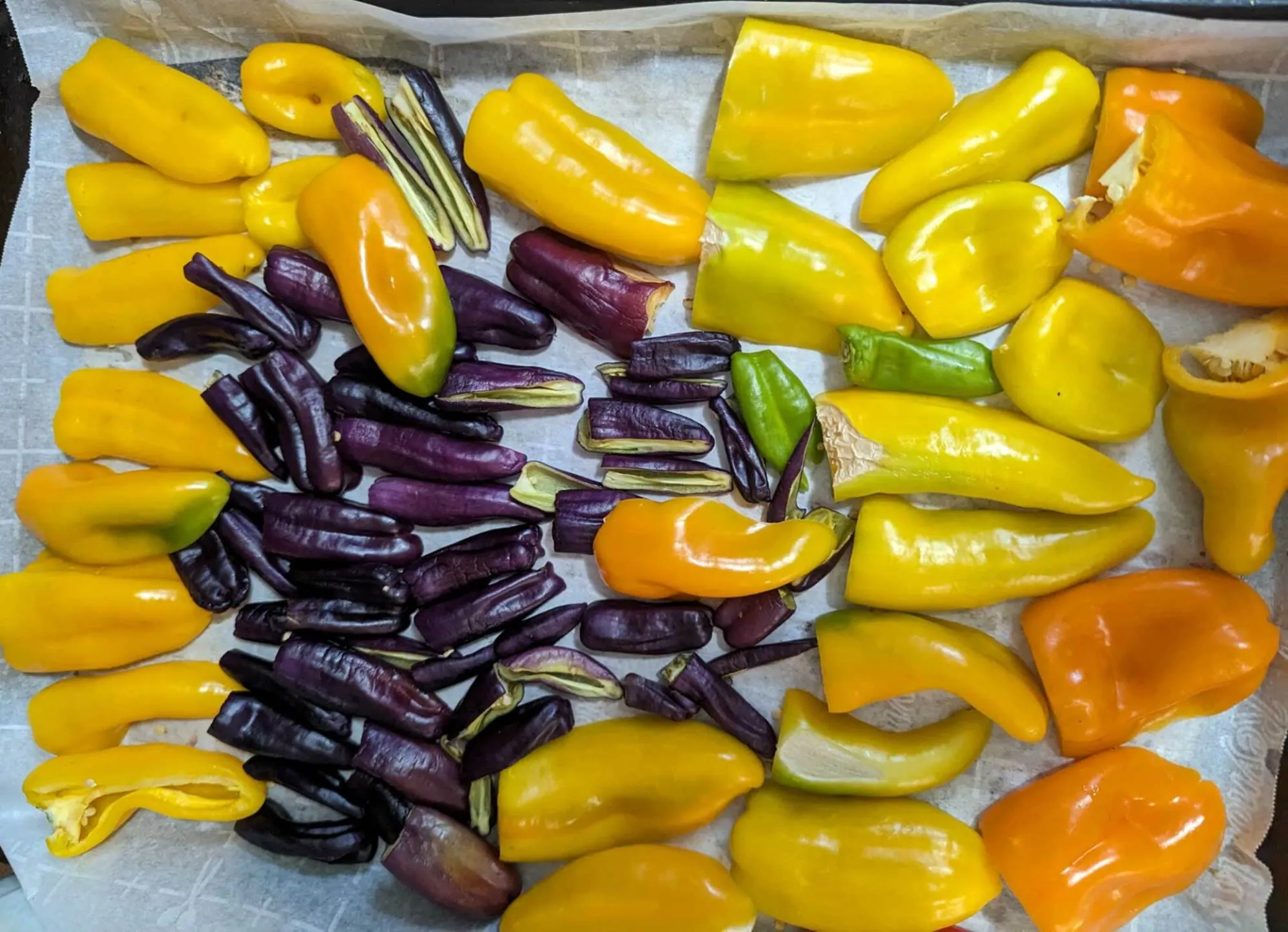You Should Grow Snacking Peppers Instead of Bell Peppers
We may earn a commission from links on this page.
Peppers are one of the best vegetables to grow. They are expensive to buy, even when in season; they don’t take up a lot of garden space; and although there are a limited number of peppers available in stores, there are thousands of varieties are out there that you can grow. Plus, you can choose precisely when to harvest them.
The pepper most people choose to grow in their garden—full size bell peppers—are a waste, though, in my opinion. Each plant only yields a few peppers, and because of their size, bell peppers take a while to grow and then to ripen. In that time, the pepper is susceptible to pests and disease. Even in the most perfect circumstances, you’ll likely only get a few big peppers.
You can roast or char snacking peppers just like large bells, or just eat them raw.
Credit: Amanda Blum
Instead, try growing snacking peppers, a miniature version of the bell pepper. Each plant grows heaps of peppers, which ripen in a shorter time span. You can use them in the same way you would large size bell peppers (except for stuffing). Available in red, yellow, chocolate, purple, and orange, these peppers light up the garden with color. I’ve pulled in excess of fifty peppers off each of my plants the last two years.
When to start growing snacking peppers
Peppers are part of the trio of nightshades that almost everyone grows each summer (tomatoes, eggplants, peppers). Because these three require the sun and heat you usually only find in the summer months, they truly are a once-a-year treat. Usually, seeds for peppers need to start early because they take longer to germinate than other nightshades. In my area (the Pacific Northwest), that means I start pepper seeds at the beginning of March. If you haven’t started your pepper seeds yet, you’ll want to do so immediately, so you’ll have time to grow starts before outdoor temperatures reach fifty degrees overnight and you can place them outside. I don’t know anyone who direct-seeds peppers outside; gardeners generally start from seedlings they’ve bought or grown themselves because you need the jumpstart seedlings offer.
How to encourage branching and support the plant
As your pepper plant grows, you want to encourage as much branching as possible, since this will result in more peppers. When the first set of true leaves appear on the plant, pinch them off using your fingers to encourage the plant to produce two branches, each with their own set of leaves. You can continue pinching off twin leaves to encourage the plant to produce more sets of branches. When the first flower appears on your plant, many gardeners will strip the plant of the flower and every branch and leaf below the flower, all the way to the soil line. Removing the first flower encourages the plant to produce more, which will result in fruit. Stripping the leaves below the flower will encourage airflow and make the plant focus energy on the plant above the flower.
The most common mistake I see people make is expecting their pepper plant to support itself. Your plant should reach two to three feet in height, but snacking pepper plants will be heavy with fruit, and top heavy at that. At the least, support the plant with a single stake for the main stem. But it would be better to consider a trellis that will offer branches support as well. Peppers don’t achieve the same width as tomatoes, so tomato trellises are often too wide to offer real support. Instead, consider pepper trellises.
Protect against disease and pests
Peppers are mostly susceptible to fungal problems. The solution for this is to ensure good airflow around your pepper plant and water only at the base of the plant. Make sure when you are touching your plant that your hands are clean, and cut out leaves with noticeable issues immediately. You can purchase seeds that are resistant to bacterial leaf spot, another common pepper malady, but if the seeds aren’t resistant, you’ll need to watch for signs: green and brown spots on the leaves. While you can try to treat bacterial leaf spot with copper treatments, you may decide to cull the plant, instead, so it does not spread to the rest of your garden.
What do you think so far?
The biggest threat to your pepper plant is snacking pests as the fruit ripens. Peppers are colorful and easy to spot. The best solution is to get them off the plant as soon as possible, which is why snacking peppers are a good idea. Peppers won’t ripen on their own inside, so you want to pick them when some color has developed on them, but you don’t need to wait until they are fully developed, either.
How to eat snacking peppers
You can eat snacking peppers raw, just like bell peppers. You can roast or broil them, char and peel them, or use them in any way you might larger varieties. I roast and freeze them each year. The only limitation is their size, so stuffing these small peppers makes for great appetizers, if not a main course.
There are a number of seeds to consider, and if you’ve missed the window on starting seeds, you can find snacking peppers at your local nursery, or order them online to be shipped.
Source link

